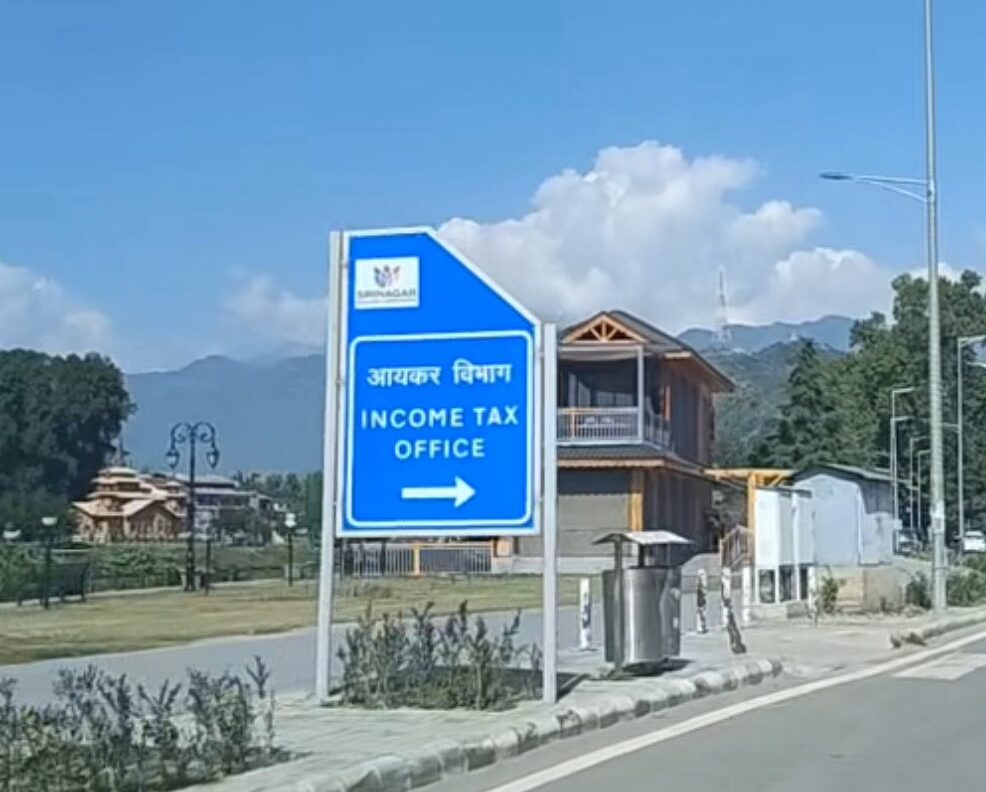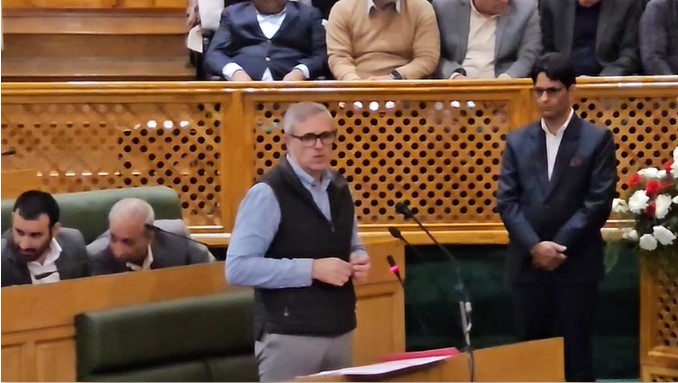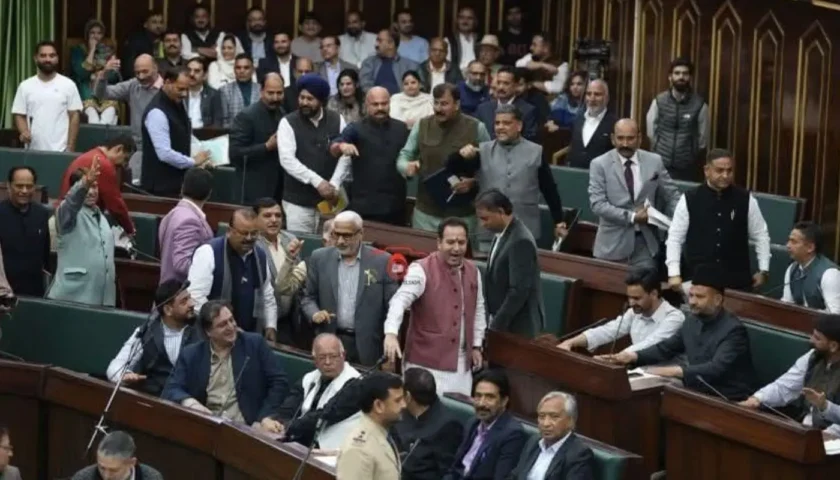The Policy Shift
By: Javid Amin | 28 October 2025
The Jammu & Kashmir government is taking firm steps to increase the use of Hindi in official correspondence and administration, signaling a new linguistic direction in the Union Territory’s governance framework.
This move aligns with the Jammu & Kashmir Official Languages Act, 2020, which recognizes Hindi as one of the five official languages alongside Urdu, Kashmiri, Dogri, and English.
While officials describe it as a push for inclusivity and modernization, linguists and cultural observers warn that the growing preference for Hindi could marginalize Urdu and Kashmiri — languages historically central to the region’s identity.
Key Government Measures
The General Administration Department (GAD) has rolled out several initiatives to institutionalize the use of Hindi across departments:
1. Bilingual Correspondence
All official letters or applications received in Hindi are now to be replied to in both Hindi and English.
This ensures administrative inclusivity while maintaining continuity with English as the common link language across UT and Central departments.
2. Trilingual Government Websites
Departmental websites are being redesigned to support three languages — Hindi, Urdu, and English — to promote accessibility and citizen engagement.
Officials claim this digital trilingualism will “enhance transparency and ease of communication” for citizens across linguistic backgrounds.
3. Language Roadmap Committee
A committee constituted under Government Order No. JK (GAD) of 2022 was tasked with creating a roadmap for balanced language use across government sectors.
The committee’s report identifies the departments and contexts in which Hindi, Urdu, Dogri, and Kashmiri should be used — but the final approval has been delayed as the Finance Department sought clarifications on implementation costs and training logistics.
Historical Context: From Urdu’s Dominance to Multilingual Governance
For over a century, Urdu held the status of J&K’s official language. It was declared so in 1889 by Maharaja Pratap Singh, making it the language of administration, record-keeping, and education.
Even after independence and the state’s special constitutional status under Article 370, Urdu remained the medium of government orders and police communication.
The Official Languages Act, 2020, passed after the reorganization of J&K into a Union Territory, marked a major policy realignment. It introduced Hindi, Dogri, and Kashmiri into the official framework for the first time — reflecting both India’s linguistic federalism and New Delhi’s integrationist approach.
What’s Changing on the Ground
In Government Offices
Circulars, internal memos, and signboards are gradually being updated to include Hindi alongside English.
Training workshops have been introduced in select departments, particularly in Civil Secretariat, Jammu, and Divisional Commissioner offices, to familiarize staff with official Hindi terminology.
However, Urdu — once the administrative mainstay — is now used less frequently in official communication. Kashmiri, despite being an official language, remains largely absent from daily governance.
In the Digital Sphere
The government’s e-governance platforms — including the J&K Services Portal and the RTI portal — are undergoing language updates.
Yet, the rollout is uneven: while Hindi interfaces are expanding, Kashmiri-language options are rare or incomplete, raising concerns about real inclusivity.
The Debate: Inclusivity or Cultural Erosion?
The language policy has opened a deep and emotional debate across the region.
Supporters Say:
-
Promoting Hindi aligns J&K with national administrative standards.
-
It strengthens communication between local departments and Central ministries.
-
Bilingual or trilingual systems encourage accessibility for citizens outside Urdu-dominant zones, especially in Jammu and newly urbanized areas.
Critics Argue:
-
Urdu’s displacement risks eroding J&K’s historical and literary legacy.
-
Kashmiri language — though recognized — remains almost symbolic, with minimal institutional support.
-
The shift towards Hindi is seen by some as part of a cultural homogenization project, rather than organic modernization.
“We are not against Hindi,” says Dr. Javaid Ahmad, a linguist at the University of Kashmir. “But there’s an imbalance. Urdu and Kashmiri are being sidelined while Hindi gets structural and financial backing. Inclusivity cannot mean replacement.”
Public Sentiment: Between Adaptation and Anxiety
In Kashmir Valley, where Urdu and Kashmiri dominate cultural life, reactions are mixed.
Many officials and students accept Hindi’s growing role as inevitable, given its national reach and use in competitive exams.
But for older generations and literary circles, the change feels like a quiet erasure.
“My grandfather’s land records are in Urdu. My son’s school notices are in Hindi. Somewhere between the two, we’ve lost our continuity,” laments Shabnam Parveen, a teacher from Sopore.
In Jammu region, however, the policy has found stronger support. Dogri and Hindi already coexist in daily life, and many residents see it as a practical administrative move.
Linguistic Hierarchies: The Missing Kashmiri
While the debate often centers on Urdu versus Hindi, Kashmiri language remains the silent casualty.
Despite being listed as an official language, it is virtually absent from signage, documentation, or education beyond symbolic recognition.
There is no standardized script across departments — some use Nastaliq, others Devanagari — and government staff receive no formal training in reading or writing Kashmiri.
Cultural experts argue that without administrative presence, Kashmiri risks becoming a heritage language rather than a living medium of governance.
“The tragedy is that Kashmiri has official status only on paper,” says Prof. Naseer Rather, Department of Linguistics, KU. “Neither its speakers nor its institutions are empowered to use it officially.”
Challenges Ahead
-
Capacity Building:
Many civil servants lack proficiency in Hindi or Kashmiri, requiring time and training to adopt the new framework effectively. -
Digital Translation Gaps:
Machine translation tools for Dogri and Kashmiri remain underdeveloped, complicating multilingual website rollouts. -
Resource Allocation:
The pending Finance Department approval reflects logistical hurdles — new signage, printing, training, and translation require substantial investment. -
Cultural Sensitivity:
Policymakers must strike a balance between modernization and cultural preservation, ensuring that no language community feels displaced.
Editorial Reflection: Language as Policy, Power, and Identity
Language is not merely a tool of communication — it is a vessel of memory, identity, and belonging.
The promotion of Hindi in J&K is part of a larger national linguistic alignment, but it must not come at the cost of regional expression.
For governance to be truly inclusive, Urdu must retain its institutional dignity, Kashmiri must gain genuine space, and Hindi must integrate, not dominate.
The strength of Jammu & Kashmir lies in its linguistic diversity — from the valleys that speak Kashmiri to the plains that echo Dogri, from Urdu’s poetry to Hindi’s administrative precision. The government’s challenge is to harmonize, not homogenize.




